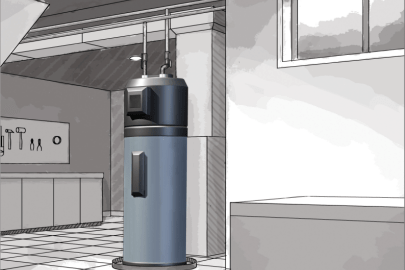The article author is making several great points on Tips on Maintaining a Water Heater overall in the content underneath.

Warm water is essential for everyday convenience, whether it's for a refreshing shower or cleaning meals. To ensure your warm water system runs efficiently and lasts longer, normal maintenance is vital. This short article gives useful pointers and understandings on just how to maintain your home's warm water system to stay clear of disturbances and costly fixings.
Introduction
Preserving your home's warm water system may appear daunting, however with a couple of basic steps, you can ensure it runs smoothly for years ahead. This guide covers every little thing from understanding your hot water system to do it yourself upkeep suggestions and understanding when to hire expert assistance.
Value of Keeping Your Warm Water System
Normal maintenance not only extends the life expectancy of your warm water system however additionally ensures it operates effectively. Ignoring upkeep can result in decreased performance, greater energy bills, and even premature failing of the system.
Signs Your Hot Water System Demands Maintenance
Knowing when your warm water system requires focus can protect against major issues. Keep an eye out for indications such as inconsistent water temperature level, unusual noises from the heating unit, or rustic water.
Flushing the Hot Water Heater
Flushing your hot water heater removes debris build-up, boosting performance and lengthening its life.
Monitoring and Changing Anode Rods
Anode rods stop corrosion inside the tank. Examining and changing them when broken is critical.
Complex Issues Calling For Specialist Assistance
Examples consist of significant leakages, electric problems, or if your hot water heater is continually underperforming.
Routine Expert Maintenance Advantages
Expert maintenance can include complete examinations, tune-ups, and making sure conformity with security requirements.
Evaluating and Readjusting Temperature Setups
Readjusting the temperature setups makes sure ideal performance and safety and security.
Do It Yourself Tips for Maintenance
You can execute a number of maintenance jobs yourself to keep your warm water system in top problem.
Checking for Leakages
Regularly check pipelines and links for leaks, as these can result in water damages and greater costs.
Understanding Your Warm Water System
Before diving into maintenance jobs, it's helpful to recognize the basic components of your warm water system. Normally, this consists of the hot water heater itself, pipes, anode rods, and temperature level controls.
Monthly Upkeep Tasks
Routine month-to-month checks can help capture minor issues prior to they escalate.
Evaluating Pressure Relief Valves
Checking the stress relief valve guarantees it functions appropriately and protects against too much pressure buildup.
Protecting Pipes
Protecting hot water pipelines reduces heat loss and can conserve energy.
When to Call an Expert
While DIY upkeep is useful, some issues call for specialist expertise.
Conclusion
Routine upkeep of your home's hot water system is essential for performance, durability, and cost financial savings. By following these suggestions and understanding when to seek specialist assistance, you can guarantee a reputable supply of hot water without unforeseen disruptions.
How to Maintain an Instant Hot Water Heater
Before tinkering with your hot water heater, make sure that it’s not powered on. You also have to turn off the main circuit breaker and shut off the main gas line to prevent accidents. Also turn off the water valves connected to your unit to prevent water from flowing into and out of the appliance. 2. When you’re done, you have to detach the purge valves’ caps. These look like the letter “T” and are situated on either side of the water valves. Doing so will release any pressure that has accumulated inside the valves while at the same time avoid hot water from shooting out and burning your skin. 3. When the purge valves’ caps are removed, you have to connect your hosing lines to the valves. Your unit should have come with three hoses but if it didn’t, you can purchase these things from any hardware or home repair shops. You can also get them from retail stores that sell water heating systems. Read the user’s manual and follow it to complete this task properly. When the hosing lines are connected, open the purge port’s valves. 4. You should never use harsh chemical cleaners or solutions when cleaning your unit. Make use of white vinegar instead. It should be undiluted and you’ll probably use about 2 gallons. 5. Now flush your water heater. This task should probably take about 40 minutes. We can’t give you specific directions for this because the procedure is carried out depending on the type, model and brand of your heater. With that being said, refer to the user’s manual. 6. When you’re done draining the unit, you have to turn off the purge port valves again. Remove the hosing lines that you earlier installed on each of the water valves. Put the valve caps (purge port) back in their respective places and be very careful so as not to damage the rubber discs that are found inside these caps. 7. Now that everything’s back in place, check your user’s manual again to find out how to reactivate your water heating system. 8. Once it is working, turn one of your hot water faucets on just to let air pass through the heater’s water supply pipes. Leave the tap on until water flows smoothly out of it. https://www.orrplumbing.com/blog/2014/september/how-to-maintain-an-instant-hot-water-heater/

I discovered that content about Water Heater Maintenance Tips You Can't Afford to Forget when browsing on the web. Are you aware of somebody else who is looking into the niche? Feel free to share it. Thank-you for taking the time to read it.
Schedule Your Job Now